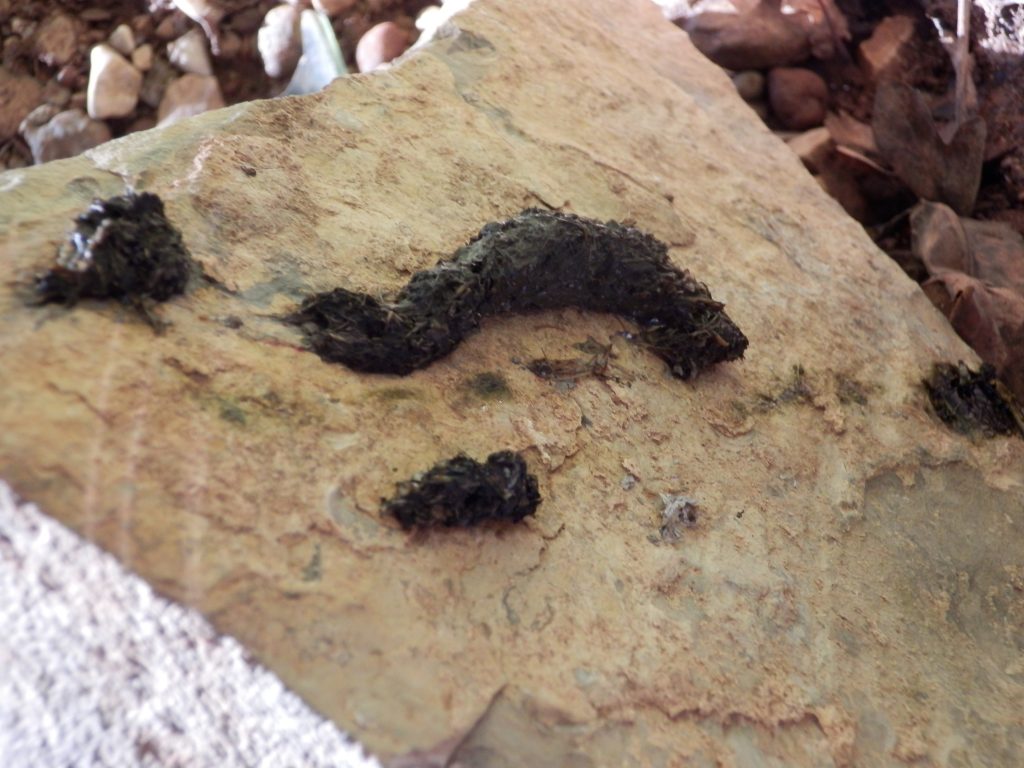It is now over 20 years since the first signs of a recovery in the otter population in Somerset, 20 years since they first started to totter eastwards from the Exe, back towards the rivers and moors where they had been so plentiful in the ‘50s and ’60s.
 Now they are seemingly almost as abundant again. Whereas in 1984 I had only 12 records for the whole of my survey area of 4,100sq. km, in 2006 I recorded 37 dead otters. I know of no part of Somerset where there are still no otters. So perhaps it is time to review what purposes continuing to monitor may serve, and to wonder if I would not be better to spend more time in my garden. To which the answer is “No”. Otter hunt records show that in the early sixties the English hunts found an average of 450 otters each year, yet by the time the concerned conservationists had organised the first national survey in 1977, as a response to the evident collapse of the otter population, it found only 170 places with any evidence at all. This represented a mere 6% of the places checked. The collapse had been sudden and in most places, total. By 1986 this had crept up to nearly 10%, by 1994 it was 22%, and in 2002 36%. Some assume that these figures indicate that the increase will continue smoothly and seamlessly, and that it will just be a matter of time before there are wall to wall (or bank to bank) otters across England. Yet the figures show that 64% of the sites looked at were still otterless. The river Otter was recolonised three times before they finally established themselves enough to breed. The original settlers died out twice.
Now they are seemingly almost as abundant again. Whereas in 1984 I had only 12 records for the whole of my survey area of 4,100sq. km, in 2006 I recorded 37 dead otters. I know of no part of Somerset where there are still no otters. So perhaps it is time to review what purposes continuing to monitor may serve, and to wonder if I would not be better to spend more time in my garden. To which the answer is “No”. Otter hunt records show that in the early sixties the English hunts found an average of 450 otters each year, yet by the time the concerned conservationists had organised the first national survey in 1977, as a response to the evident collapse of the otter population, it found only 170 places with any evidence at all. This represented a mere 6% of the places checked. The collapse had been sudden and in most places, total. By 1986 this had crept up to nearly 10%, by 1994 it was 22%, and in 2002 36%. Some assume that these figures indicate that the increase will continue smoothly and seamlessly, and that it will just be a matter of time before there are wall to wall (or bank to bank) otters across England. Yet the figures show that 64% of the sites looked at were still otterless. The river Otter was recolonised three times before they finally established themselves enough to breed. The original settlers died out twice.
That this could happen again is implicit in some of the findings from Vic Simpson’s analysis of the dead otters he has for post-mortem. They still carry a considerable burden of pollution. This is recognised by the recent elevation of the otter tissue analysis programme to become part of the national monitoring for the health of the environment; human health, that is. Some of thesepollutants have a harmful effect on very young cubs, so presumably many bitch otters have little breeding success. If you consider that the 37 dead ones I recorded in one year represent about 19 litters from those that did manage to raise young, and that otters do not breed every year, it is no wonder their expansion is slow and precarious. We need to keep monitoring in case a collapse sets in again. In 2004 a parasite new to Britain was discovered in the otters on the Somerset Levels. This may well cause another population decline, especially in the Somerset/Avon area, which is still the current frontier of expansion.
In the last national survey, north and west Devon scored high percentages, 90, 89, 87, even 100 for one catchment; the Tone was lower at 75%, the Brue feeble at 29%, and the next rivers east of there were 18%, 11% and 7%. This against a national score of 36%. Our survey is recording important and reassuring data: should expansion cease, you will be the first to spot it.
The finer detail, the better of course. Some of us in Somerset check the same place every day. By expressing our positives as a percentage of checkable days we are starting to measure trends. I was surprised at the severity of the blip at my site after just one farm pollution, and at how long it took before the otters found my stream to their liking again.
Properly kept, regular records ought to be able to shed some light on some of the mysteries about these much studied and little known animals. Firstly, to what extent do they have patterns of patrol, either over days or with the seasons? When one’s otter vanishes for six or more weeks, where has it gone? Who has borrowed it?
Other areas we ought to be able to look into include otters away from water, otters crossing catchment watersheds, aggression and/or sociability, otter and/or mink, otters in towns, otters in daytime, use of seasonal foods, breeding seasons and cycles. There’s really no end to it. Keep up the good work!
James Williams
